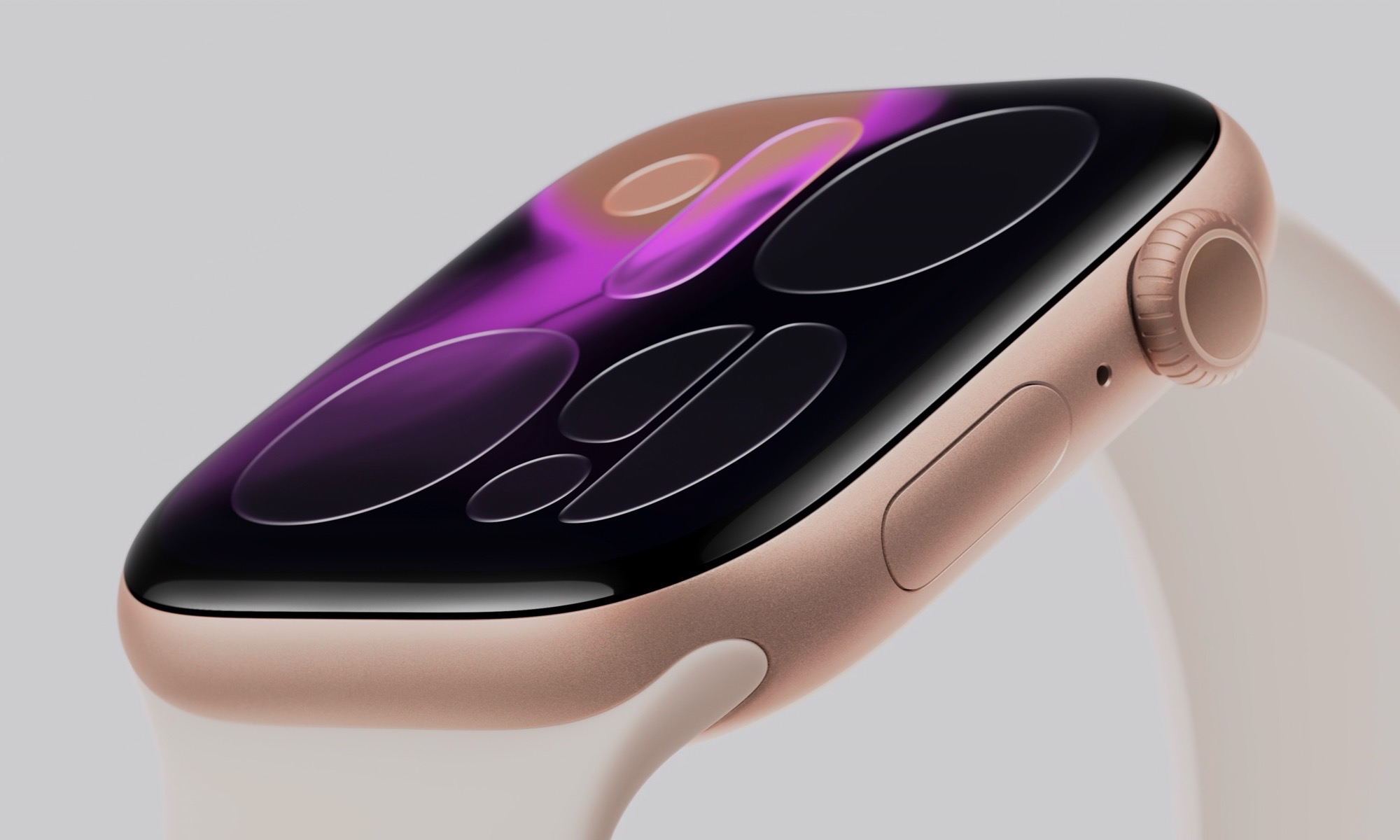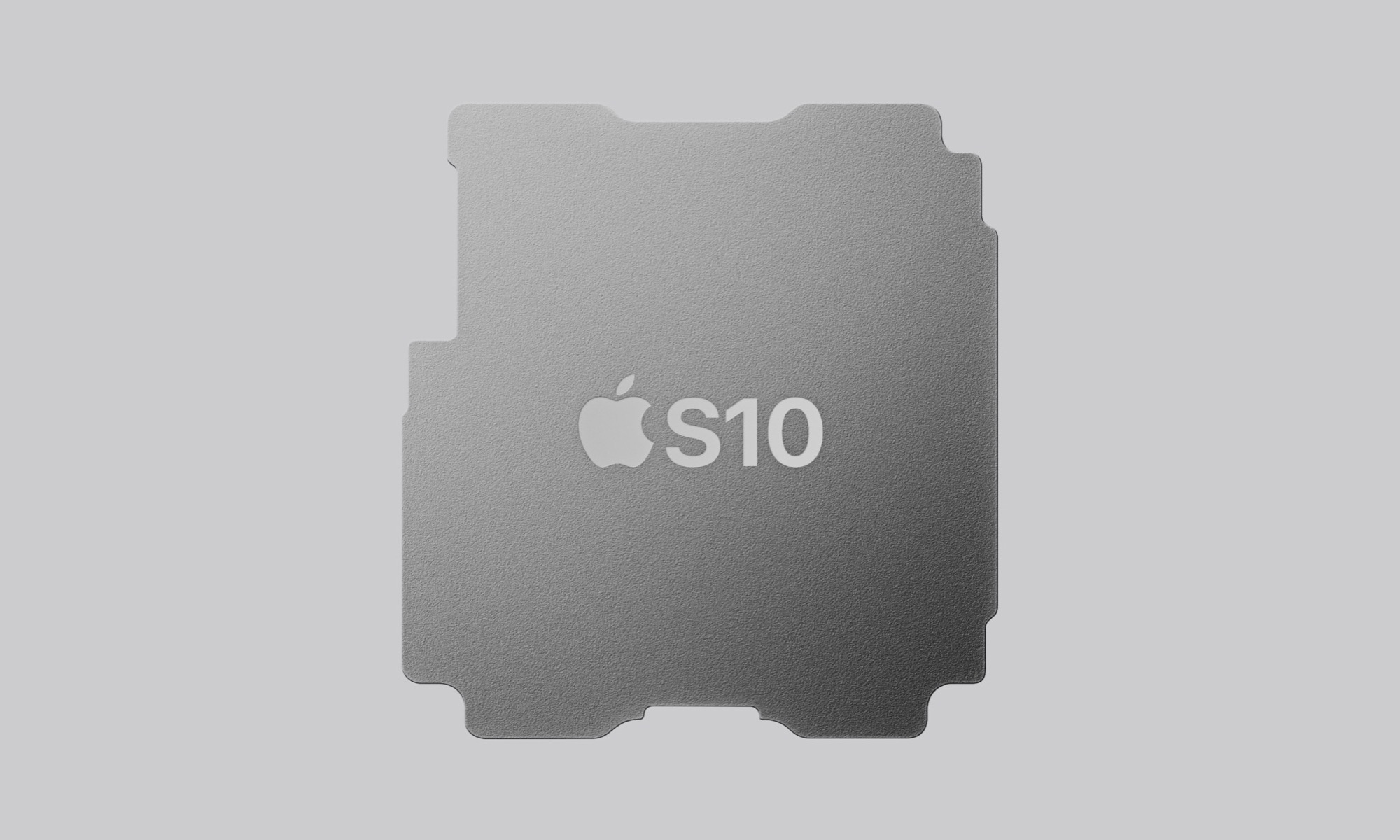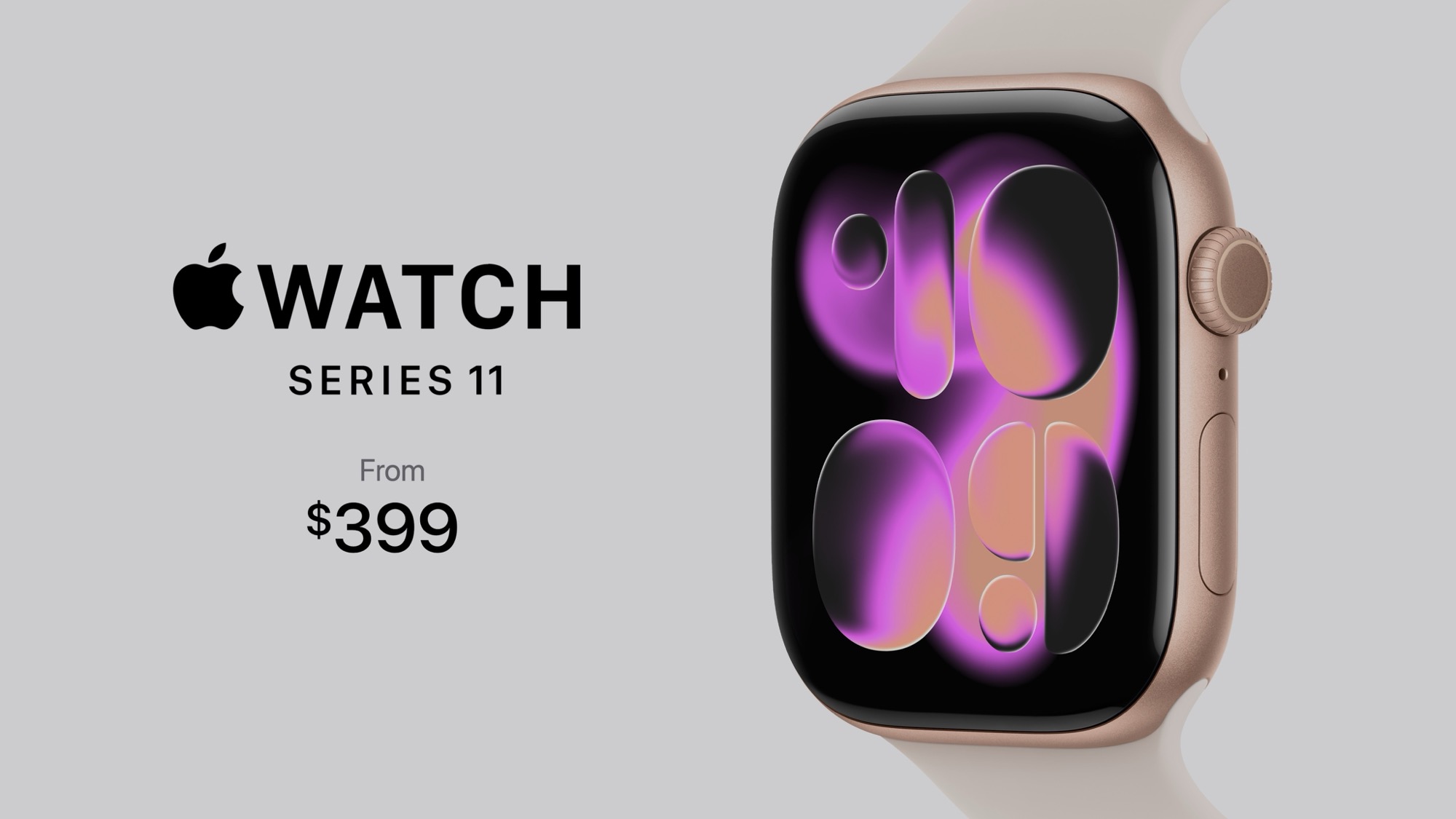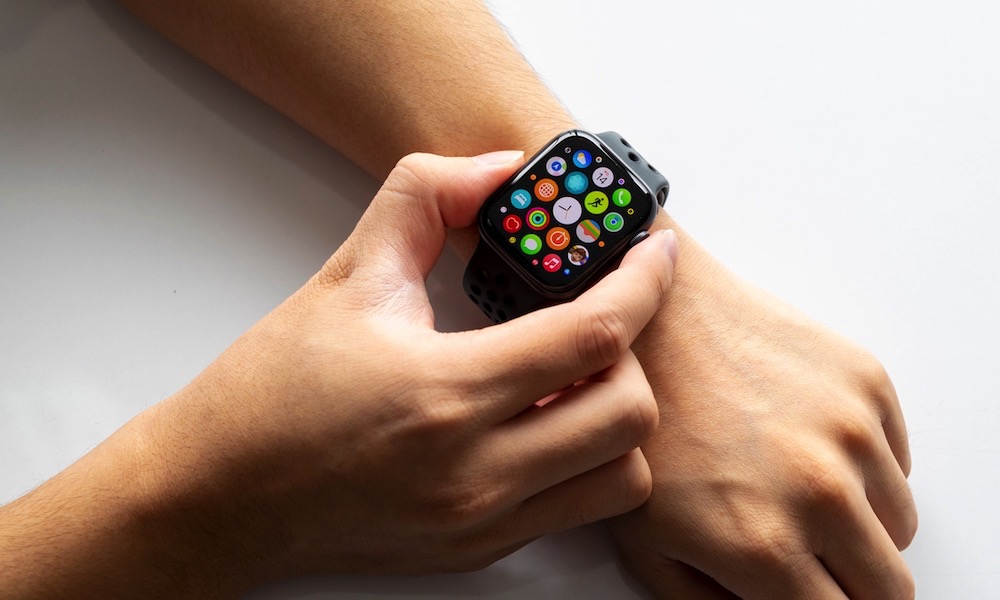Apple Watch Series 11 vs. Series 10: Incremental Changes?
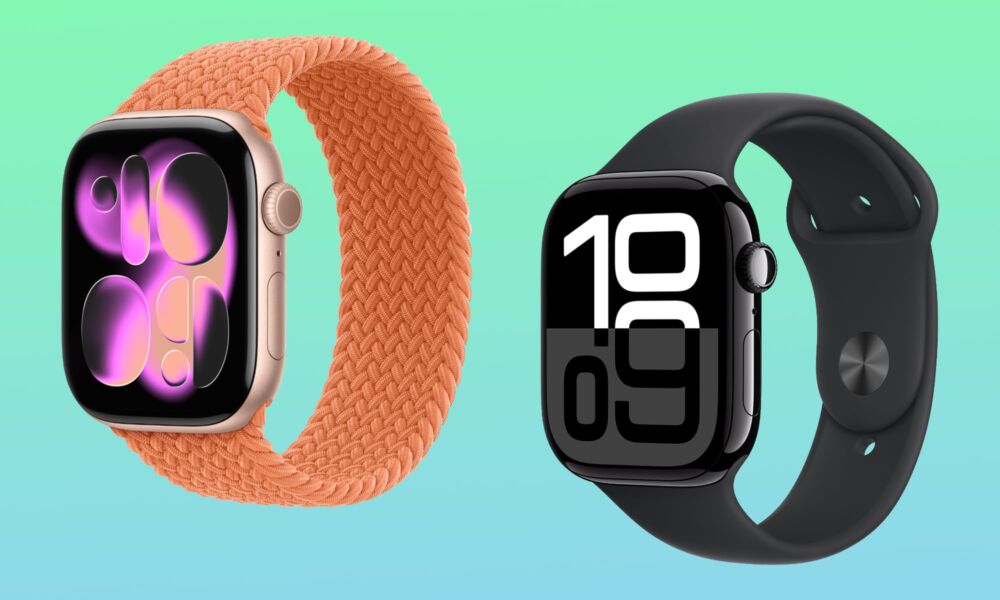
Toggle Dark Mode
Apple’s refresh cycle is a tradition at this point. Even if the company takes a break from updating some products, we know for a fact that the iPhone and the Apple Watch are getting a refresh every year.
Unfortunately, with so many consecutive updates, the Apple Watch doesn’t tend to get much innovation year over year. Instead of something new, Apple focused on a subtle update this year.
If you’re already wearing an Apple Watch Series 10 on your wrist, you might be wondering if the newest model is worth the upgrade, or whether Apple has simply polished what was already a great wearable.
From design and display to health features, processing power, and battery life, here’s a full comparison between the two models to help you decide if the Apple Watch Series 11 is actually worth the upgrade.
Apple Watch Series 11 vs. Series 10: Design
The design of the Apple Watch has remained largely unchanged for several years, and the Apple Watch Series 11 doesn’t even attempt to fix something that, at least according to Apple, isn’t broken.
You’re still looking at a wearable that comes in 42 mm and 46 mm case sizes, with the same sleek curves and edge-to-edge display that have become the quintessential design of Apple’s watches.
That’s not to say that Apple doesn’t make small design tweaks — last year’s Series 10 got thinner and lighter with a slightly larger screen — but even those changes only seem to show up every four years, and we’re only on the second generation of this design. That means that if you want to upgrade your Apple Watch Series 10 to get the look and feel of a new device, you’re better off skipping it this year — and maybe next year, too.
The color options are also nearly identical between the Series 11 and Series 10. Both the Apple Watch Series 10 and Series 11 come in rose gold, silver, and jet black aluminum, plus Natural Titanium, Gold Titanium, and Slate Titanium finishes if you’re willing to opt for the more expensive model.
The only real addition this year is space gray aluminum. That’s a nice addition to this year’s lineup for those who felt jet black was too dark, but it doesn’t feel like a groundbreaking change to justify the upgrade.
For most current users, the lack of a new design might make you want to skip the upgrade this time around.
Apple Watch Series 11 vs. Series 10: Display
One of the main reasons users upgrade their Apple Watches is for a brighter, sharper, or larger screen. Unfortunately, with the Apple Watch Series 11, Apple has chosen to keep things exactly as they were on the Series 10.
Both models use the same LTPO 3 wide-angle OLED screen, offering fantastic visuals and vivid colors. Additionally, peak brightness remains at 2,000 nits, which is still impressive, but not necessarily new. Meanwhile, the minimum brightness dips as low as one nit when you’re using the Always On display, making the Apple Watch models visible at all times.
This is an area where the two devices are pretty much the same. If you have an Apple Watch Series 10, you will see no meaningful visual difference if you do plan on upgrading,
Of course, if you’re upgrading from an even older Apple Watch, the Series 11 will feel like an amazing upgrade, as this display is one of the best on any wearable in the market.
Apple Watch Series 11 vs. Series 10: Health Features
Apple has spent the last decade making the Apple Watch into a health and wellness accessory that also complements your iPhone. Unfortunately, we haven’t seen any substantial health upgrades to the Apple Watch over the past couple of years. However, that changes this year.
With the Apple Watch Series 11, Apple also introduced a new health feature that notifies you when it detects hypertension. This new feature might be a game-changer for some users, as high blood pressure affects over 100 million people in the US.
However, before you rush out and upgrade, the good news is that you don’t need an Apple Watch Series 11 to use this feature. In fact, you don’t even need an Apple Watch Series 10, as this feature is also available for the Apple Watch Series 9.
Besides the new health feature, both the Apple Watch Series 10 and Series 11 come packed with the rest of the health features expected from Apple: continuous heart rate monitoring, the ECG app, sleep tracking, blood oxygen sensing, and temperature tracking.
That is some good news for current Apple Watch users, as you can access Apple’s latest health feature without spending a single dime.
Apple Watch Series 11 vs. Series 10: Performance
Processing power is another area where the differences between these two wearables are minimal. The reality is that the Apple Watch Series 11 shouldn’t be much faster than the Series 10, if at all.
The reason is that both Apple Watch models come with the same processor. The Apple Watch Series 11 and Series 10 come with the S10 chip with a 64-bit dual-core processor. Additionally, both devices feature the same W3 Apple wireless chip, the second-generation Ultra Wideband chip, 4-core Neural Engine, and 64 GB of capacity.
To put it another way, these are essentially the same Apple Watch, at least in terms of processing power.
With that said, it’s worth noting that the Apple Watch Series 11 does support 5G and LTE, whereas the Series 10 only supports LTE and UMTS (Universal Mobile Telecommunications System, also known as 3G). However, it’s also important to note that not all carriers offer 5G support for the Apple Watch right now. Even if your carrier has long supported 5G, the Apple Watch utilizes a unique set of 5G features known as “RedCap,” and many carriers are still in the process of upgrading their networks to support this.
Unless you’re comparing the watches side-by-side while launching the same apps, it would be very hard to notice a performance gap. For most people, both watches will feel equally fast and responsive.
Apple Watch Series 11 vs. Series 10: Battery Life
Battery life is the one area where Apple has made a marginal improvement with its latest Apple Watch. The Apple Watch Series 11 promises up to 24 hours of usage on a single charge, compared to the Series 10’s 18 hours. Just be sure to read the fine print, as those extra six hours are specifically for sleep tracking, so the boost from 18 to 24 hours isn’t as dramatic as it sounds.
Still, since most normal people spend at least part of every 24 hours in bed, this does effectively mean you can get through a full day and a night without needing to recharge. By comparison, the Series 10 often still requires a quick charge if you want to use it for sleep tracking.
In Low Power Mode, the Apple Watch Series 11’s battery life stretches even further, offering up to 38 hours. The Apple Watch Series 10, on the other hand, offers up to 36 hours. While that two-hour increase may not sound like much, it can make a difference if you’re always on the move or like to go outdoors for long periods of time.
Another benefit of having the Apple Watch Series 11 is fast charging. Just like the Apple Watch Series 10, the new model can go from 0 to 80% in around 30 minutes. However, the newer model adds the ability to squeeze out up to 8 hours of normal use with just a quick 15-minute charge. That quick boost could be a lifesaver if you’re heading out the door and realize your watch doesn’t have enough juice for the rest of the day.
Overall, the bump in battery life is the most practical improvement of the Apple Watch Series 11. It doesn’t completely change how you use it, but it definitely makes it easier to carry the Watch around for long periods of time without having to worry about the battery.
Apple Watch Series 11 vs. Series 10: Price
Price is another significant factor to consider, especially when the prices of premium devices aren’t expected to decrease anytime soon.
The Apple Watch Series 11 starts at $399 for the GPS-only model and $499 for the GPS + Cellular version, both in the smaller 42 mm size. If you want the larger 46 mm version, a titanium finish, or one of the special edition models, the price starts to add up. Granted, this might still feel like a good price, especially compared to the Apple Watch Ultra, but it’s definitely a hefty amount, especially for a device that doesn’t offer any new features.
The Apple Watch Series 10, meanwhile, has officially disappeared from Apple’s own store, as it usually happens with the “outdated” models. However, you can still find it through third-party retailers like Amazon.
There, you can often find it at a discount, with GPS versions sometimes dropping as low as $359 for the larger 46 mm model. If you’re worried about your budget, the older watch is a more compelling alternative. The Apple Watch Series 10 delivers nearly all the same features as the Series 11, and while the battery life is shorter, the price difference will likely be more significant than a couple of extra hours of battery life.
Apple Watch Series 11 vs. Series 10: Which One Should You Get?
For most people who are already wearing an Apple Watch Series 10, there’s no reason to upgrade to the Series 11. However, if you’re coming from an older model, then deciding between the Apple Watch Series 10 and Series 11 comes down to a simple question: how much do you value small improvements?
If you’re looking for a dramatically different design, a sharper display, or new health tools, the Apple Watch Series 11 doesn’t deliver enough of anything to justify the upgrade. The fact that Apple made hypertension notifications available to Series 10 and Series 9 owners means that you don’t need to worry about upgrading for at least another year. Those with an older Apple Watch can easily save a few bucks by opting for a Series 10 and wouldn’t miss any new features.
However, if battery life is a priority, or you have an older device like a Series 7 or Series 8, the Apple Watch Series 11 has a clear advantage. Being able to keep using your watch for up to 24 hours on a single charge, and even squeeze out 8 hours from a 15-minute charge, makes it a more reliable companion for long days and trips with no access to a charger.
Of course, you should also consider the price. You will likely find the Apple Watch Series 10 at a discount right now, and the price is expected to drop even further as the holidays approach. Getting last year’s Apple Watch for 10% or even 20% less will be a steal, considering how amazing that wearable is.
Of course, if you only want to buy directly from Apple’s website, the Apple Watch Series 11 will be your only option.
This Isn’t a Good Year to Upgrade Your Apple Watch
Apple has had trouble making the new Apple Watch compelling enough to upgrade it, but this year, it took it one step further. Not only do you get the same device on the outside, but you’re still getting last year’s chip on the inside. This year, the Apple Watch Series 11 feels more like a “Series 10S.”
With that said, the improvements it does bring, including the slightly better battery life and faster charging times, are still meaningful. For current Apple Watch Series 10 users, there’s little to no reason to upgrade unless your battery life is a constant issue. For new users or those with much older watches, the Apple Watch Series 11 offers the best that Apple currently makes, albeit at a premium price.
Overall, it’s best to save some money and get the Apple Watch Series 10 this year. Or better yet, if you already have a Series 9 or Series 10, start saving up some money. Hopefully, next year Apple will surprise us with an Apple Watch that’s actually worth the upgrade.



